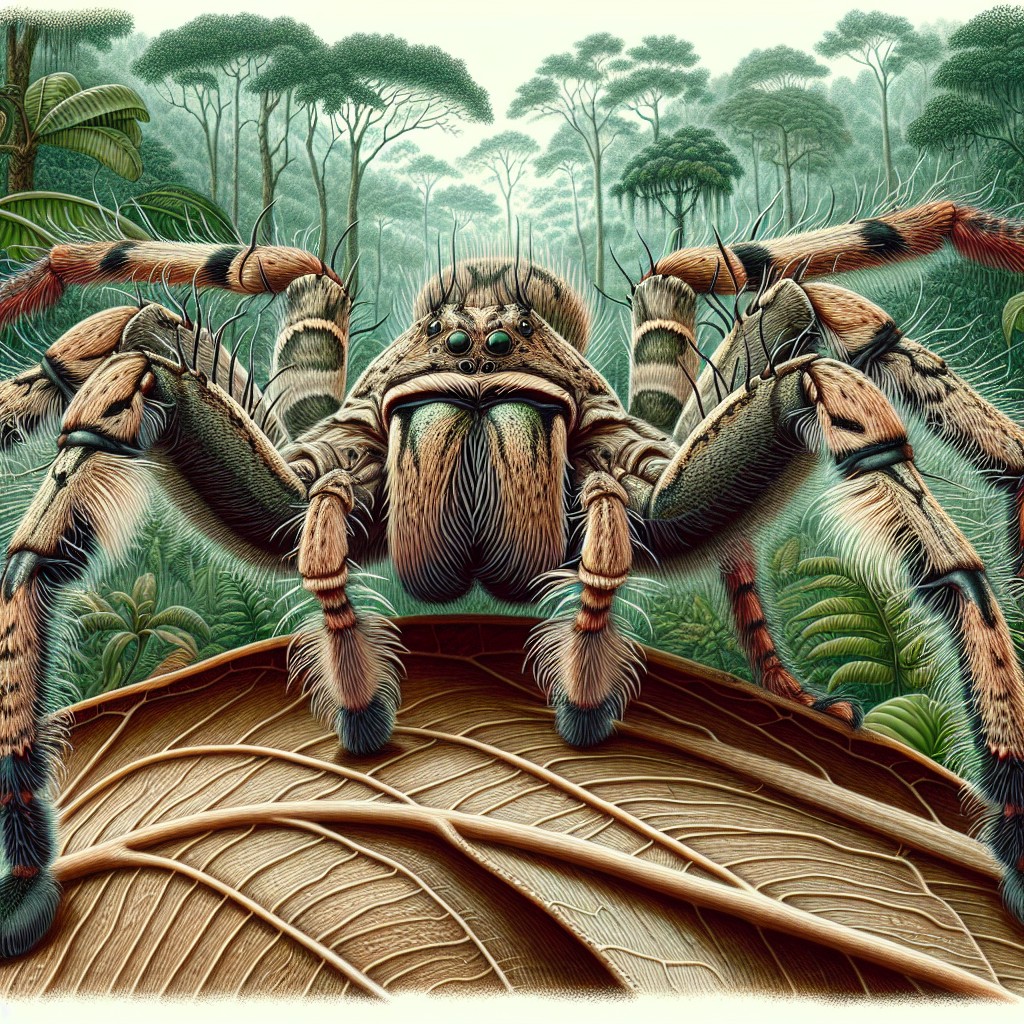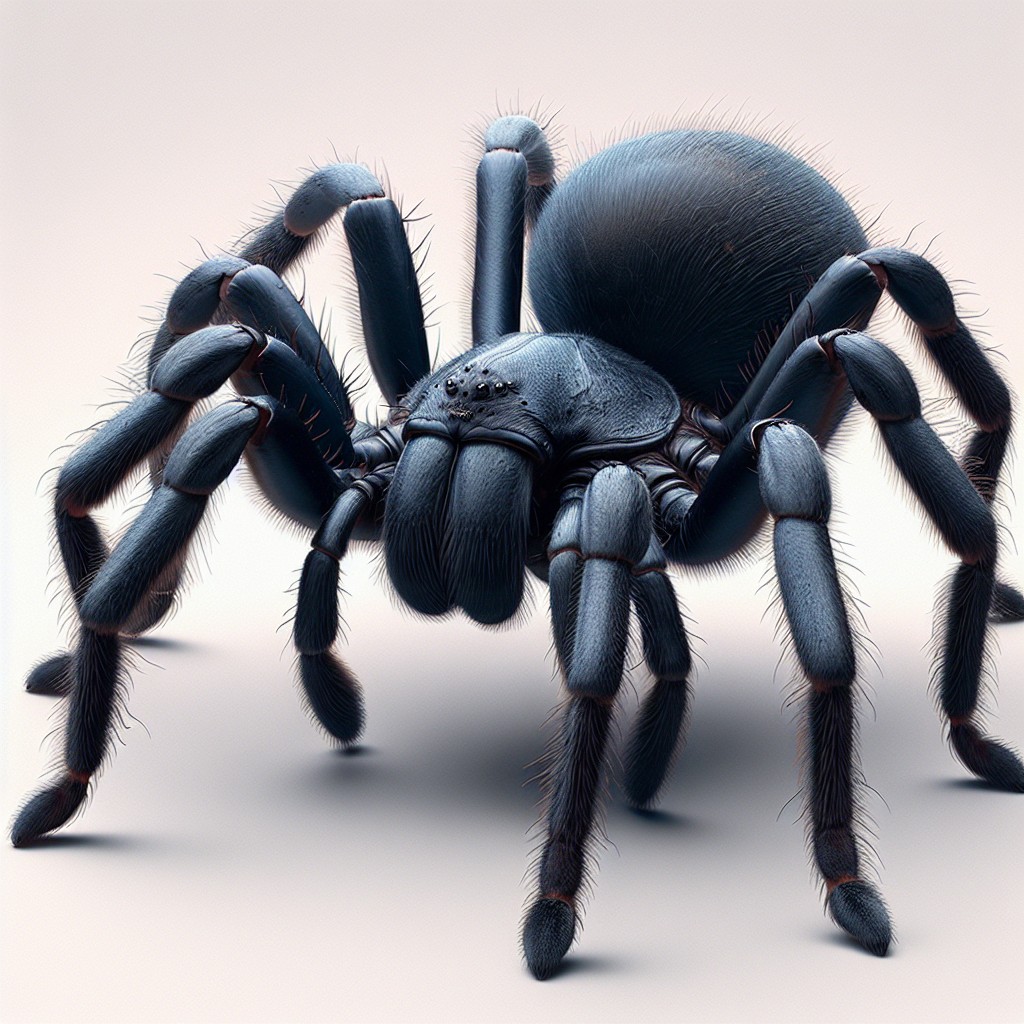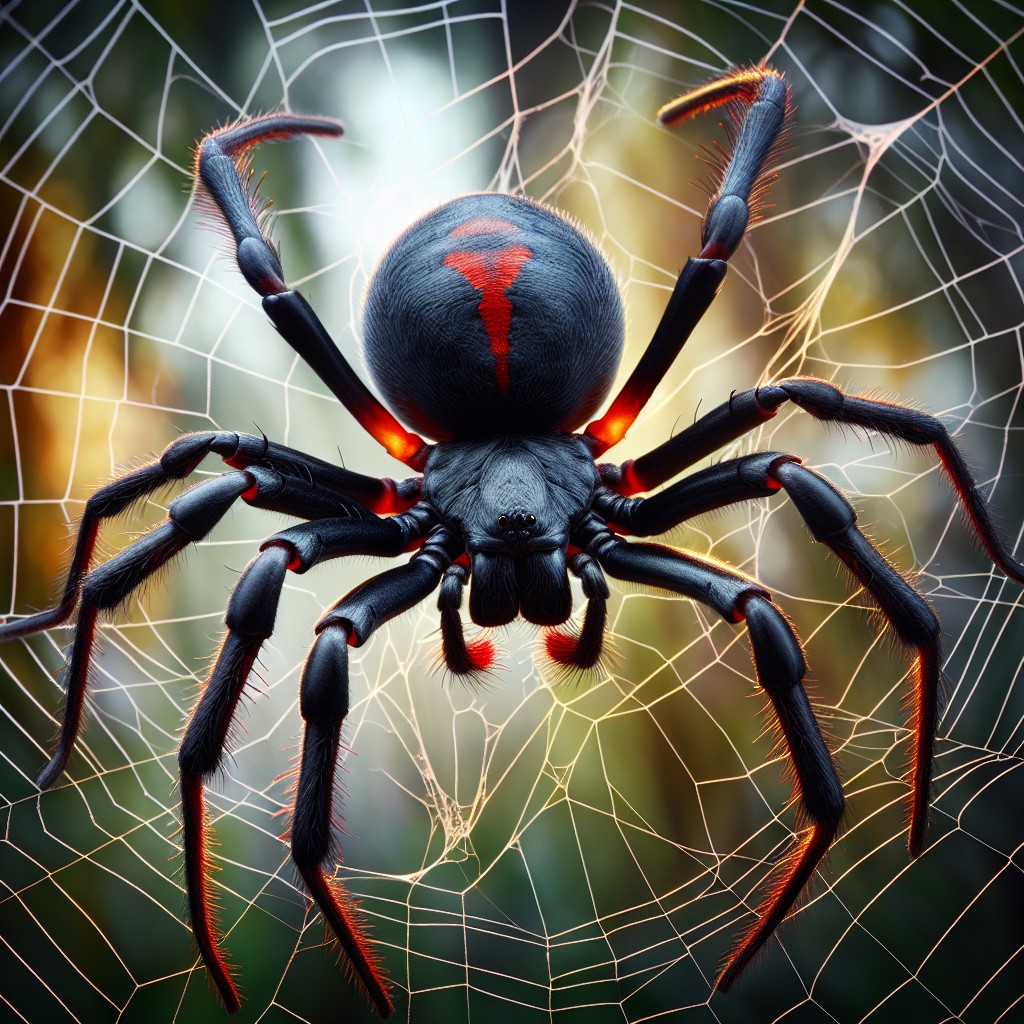The black widow spider is a well-known and feared arachnid that belongs to the genus Latrodectus. It is one of the most venomous spiders in the world, and its bite can be potentially dangerous to humans. Understanding this species is important for both scientific research and public safety.
Key Takeaways
- The Black Widow Spider is a venomous arachnid found in North and South America.
- It is identified by its shiny black body and red hourglass-shaped marking on its abdomen.
- Black Widow Spiders prefer warm, dry habitats such as deserts, forests, and urban areas.
- Their venom contains neurotoxins that can cause muscle pain, cramps, and in severe cases, paralysis and death.
- Female Black Widow Spiders are known for their cannibalistic behavior and can lay up to 900 eggs in a single sac.
Physical Characteristics of the Black Widow Spider
The black widow spider is easily recognizable by its shiny black body and distinctive red hourglass-shaped marking on its abdomen. The female black widow is larger than the male, measuring about 1.5 inches in length, while the male is only about half that size. The female’s body is also more robust, while the male has longer legs.
Distribution and Habitat of the Black Widow Spider
Black widow spiders are found in various parts of the world, including North America, Europe, Africa, and Asia. In North America, they are most commonly found in the southern and western regions. These spiders prefer warm climates and are often found in dark, secluded areas such as woodpiles, sheds, and outdoor toilets.
Venom of the Black Widow Spider and Its Effects on Humans
| Category | Data/Metrics |
|---|---|
| Spider Species | Black Widow Spider (Latrodectus mactans) |
| Location | Found in North and South America |
| Appearance | Shiny black body with a red hourglass shape on the underside of the abdomen |
| Venom Composition | Contains neurotoxins, specifically alpha-latrotoxin and latrodectin |
| Effects on Humans | Can cause muscle pain, cramps, spasms, and stiffness; nausea and vomiting; sweating; headache; high blood pressure; and in severe cases, seizures and respiratory failure |
| Treatment | Antivenom, muscle relaxants, and pain relievers may be used to treat symptoms |
The venom of the black widow spider is a neurotoxin that affects the nervous system of its prey. When a human is bitten by a black widow spider, they may experience symptoms such as severe pain at the bite site, muscle cramps, nausea, vomiting, and difficulty breathing. In rare cases, a black widow spider bite can be fatal.
Treatment for black widow spider bites typically involves administering antivenom to counteract the effects of the venom. Pain medication may also be given to alleviate symptoms. It is important to seek medical attention immediately if you suspect you have been bitten by a black widow spider.
Life Cycle and Reproduction of the Black Widow Spider
The life cycle of a black widow spider consists of several stages. After mating, the female black widow produces an egg sac that contains hundreds of eggs. She guards the sac until the spiderlings hatch. The spiderlings go through several molts before reaching adulthood, and the entire process takes about three to four months.
Mating and reproduction behaviors of the black widow spider are unique. The male performs a courtship ritual to attract the female, which involves vibrating his web and producing pheromones. Once the female accepts the male, they mate, and the male often becomes a potential meal for the female afterwards.
Prey and Predators of the Black Widow Spider
The black widow spider preys on a variety of insects, including flies, mosquitoes, beetles, and grasshoppers. They capture their prey by spinning sticky webs and waiting for unsuspecting insects to become trapped. Once caught, the black widow immobilizes its prey with its venom before consuming it.
Despite their venomous nature, black widow spiders have natural predators. These include birds, reptiles, and other spiders. Some species of wasps are also known to parasitize black widow spiders by laying their eggs on them, which eventually kill the spider.
Importance of the Black Widow Spider in Ecosystems
Black widow spiders play an important role in ecosystems as both predators and prey. They help control populations of insects by feeding on them, which helps maintain balance in ecosystems. Additionally, they serve as a food source for other animals higher up in the food chain.
Myths and Misconceptions about the Black Widow Spider
There are several common misconceptions about black widow spiders that have led to fear and misunderstanding. One myth is that all female black widows kill and eat their mates after mating. While this behavior does occur in some cases, it is not universal among all black widow species.
Another myth is that black widow spiders are aggressive and will attack humans unprovoked. In reality, black widow spiders are shy and will only bite if they feel threatened or cornered. They prefer to retreat and hide rather than confront humans.
Prevention and Treatment of Black Widow Spider Bites
To prevent black widow spider bites, it is important to take precautions when working or spending time in areas where they are commonly found. This includes wearing gloves when handling woodpiles or other potential hiding spots for black widow spiders. It is also important to shake out clothing and shoes before putting them on.
If you are bitten by a black widow spider, it is crucial to seek medical attention immediately. While waiting for medical help, you can apply a cold compress to the bite site to help alleviate pain. It is important not to try to suck out the venom or apply a tourniquet, as these methods are ineffective and can cause further harm.
Conservation and Future Research of the Black Widow Spider
The black widow spider faces threats to its survival, including habitat loss and pesticide use. Continued research on the biology and behavior of black widow spiders is important for understanding their ecological role and developing effective conservation strategies.
Conservation efforts for the black widow spider include protecting their natural habitats and raising awareness about their importance in ecosystems. By educating the public about the true nature of black widow spiders and dispelling myths and misconceptions, we can foster a greater appreciation for these fascinating creatures.
In conclusion, the black widow spider is a unique and important species that deserves our understanding and respect. By learning more about their physical characteristics, distribution, venom, life cycle, prey-predator relationships, and ecological role, we can better appreciate their place in the natural world. It is also crucial to debunk myths and misconceptions surrounding these spiders and take appropriate measures to prevent and treat black widow spider bites. Through conservation efforts and continued research, we can ensure the survival of this remarkable species for future generations.
FAQs
What is a Black Widow Spider?
A Black Widow Spider is a venomous spider belonging to the genus Latrodectus. They are known for their distinctive black color and red hourglass-shaped marking on their abdomen.
Where are Black Widow Spiders found?
Black Widow Spiders are found throughout the world, but are most commonly found in warmer regions such as the southern United States, South America, Africa, and Australia.
What do Black Widow Spiders eat?
Black Widow Spiders primarily feed on insects, but they have been known to eat other spiders and even small animals such as lizards and mice.
Are Black Widow Spiders dangerous?
Yes, Black Widow Spiders are considered dangerous to humans. Their venom is neurotoxic and can cause severe muscle pain, cramps, and spasms. In rare cases, their bite can be fatal.
How can I identify a Black Widow Spider?
Black Widow Spiders are typically black in color and have a red hourglass-shaped marking on their abdomen. Females are larger than males and can grow up to 1.5 inches in length.
What should I do if I am bitten by a Black Widow Spider?
If you are bitten by a Black Widow Spider, seek medical attention immediately. Symptoms can be severe and may require antivenom treatment.
How can I prevent Black Widow Spiders from entering my home?
To prevent Black Widow Spiders from entering your home, seal any cracks or openings in doors, windows, and walls. Keep your home clean and clutter-free, and store firewood and other outdoor items away from the house.


